{"type":"video","version":"1.0","provider_name":"Vimeo","provider_url":"https://vimeoom/","title":"MITOSIS | Biophilic Regenerative Ecosystem | GG-loop","author_name":"GG-loop","author_url":"https://vimeoom/ggloop","is_plus":"0","account_type":"basic","html":"<iframe src="https://player.vimeoom/video/477663861?h=321d3ce3e9&dnt=1&app_id=122963" width="1050" height="591" frameborder="0" allow="autoplay; fullscreen; picture-in-picture" allowfullscreen title="MITOSIS | Biophilic Regenerative Ecosystem | GG-loop"></iframe>","width":"1050","height":"591","duration":"135","description":"The need for healthy homes has hardly ever been more apparent than during the current global conditionIn order to bring regenerative collective habitation to all scales of development, Amsterdam architecture practice GG-loop developed Mitosis: a biophilic building ecosystem where dwellers experience a unique way of living and coexist harmoniously with naturenFor more info, consult https://gg-looomnVideos: No Water for WhalesnEdited by: Chelsea FunOriginal music: "Frebooter" by Oreste SangiovanninnSpecial thanks for the support to Arup Engineers and for the renders to HexaPixel","thumbnail_url":"https://i.vimeocdnom/video/992313315-ccf40609c9a0f0c6499cb5f3d5f00feacc86425c31d7bddb892f4e5efcb5488f-d_960","thumbnail_width":"960","thumbnail_height":"540","thumbnail_url_with_play_button":"https://i.vimeocdnom/filter/overlay?src0=https%3A%2F%2Fi.vimeocdnom%2Fvideo%2F992313315-ccf40609c9a0f0c6499cb5f3d5f00feacc86425c31d7bddb892f4e5efcb5488f-d_960&src1=http%3A%2F%2Ff.vimeocdnom%2Fp%2Fimages%2Fcrawler_play.png","upload_date":"2020-11-10 11:45:32","video_id":"477663861","uri":"/videos/477663861","arve_cachetime":"2021-09-27 04:50:58","arve_url":"https://vimeoom/477663861"}
Mitosis is the division of a cell into two identical ‘daughter cells’ and the purpose of this process is to grow as well as replace worn-out cells. Now that we have brushed on the biology bit, let’s move on to the sustainable architectural structure Mitosis which is also inspired by the process mentioned earlier as you might have guessed by its name! Amsterdam-based architecture firm GG-loop collaborated with Arup to design a modular building system that focuses on regenerative sustainable living and urban development.
Created with biophilic principles and parametric design tools, the hypnotizing prefab timber modules we see will be optimized to be flexible and scalable. This will let the building continue expansion with time in several different urban settings while accommodating the changing times which often results in changing needs. The ability to expand the structural hub is where the building gets its name from. Mitosis can be used for a wide range right from creating communities with off-grid, single-family homes to high-density, mixed-use zones in cities. GG-loop’s pilot project Freebooter was the foundation for Mitosis and is in itself an award-winning pair of prefabricated, cross-laminated timber apartments that were completed last year in Amsterdam.
Just like flexible organism evolves to adapt to different settings, Mitosis will also be able to do that with its individual, rhomboid-shaped modules that are stacked together to create shared outdoor spaces and private terraces. The outdoor areas would be filled with enough plants to make a lush green cover which will allow the residents to reconnect with nature while offsetting the urban heat island effect – pretty ‘cool’, eh? These plants will also elevate the air quality levels, especially in cities while encouraging sustainable living practices of urban farming and community gardens. The terraced build provides ample natural light to both plants and apartments. The greenery will also help the existing wildlife of the area to continue having their space and coexist with the residents.
“Mitosis adopts the 14 principles of biophilic design and articulates the relationships between nature, human biology, and the design of the built environment. Its construction is organic and flexible, providing large areas of urban and vertical farming, greenhouses, wildlife corridors, and integration of habitat creation, that encourage shared outdoor activities among residents,” said the team in their project statement. The unique concept aims to give its residents an outdoor space along with the amenities needed to participate in environmentally friendly communal activities. Mitosis gives social interaction and community building as much importance as it does to create a sustainable living environment. This promotes the overall health and well-being of the residents and it is something only a few architectural projects look at once they are done adding a garden or a gym – the physical space is tied with our emotional space, and GG-loop creates an environment that promotes the growth of both sustainably.
Designer: GG-loop
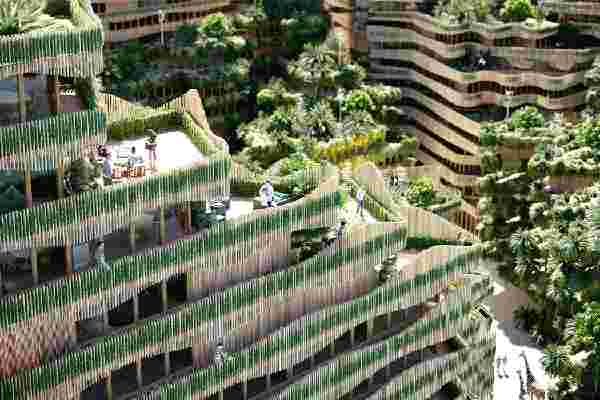
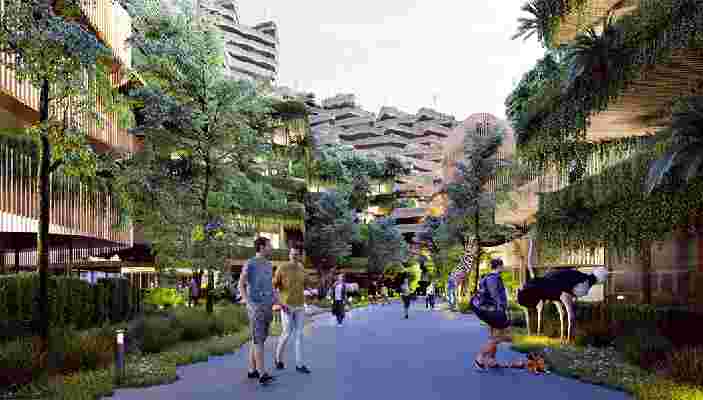
The 3 Meter Silver House by Boyarsky Murphy
I’m certain it wasn’t in the architects’ conscious minds while struggling with this narrow and awkward site, but the main impact of the simple house they have produced in Elgin Avenue is an emotional one: the kind of emotion that comes from moving through small dark space, emerging into wide light spaces, taking devious routes, delving into cave spaces. The last thing one might expect from a very little house in west London is an essay in the essence of picturesque architecture, but here it seems to be.
The Sliver House (its owner prefers to call it the Glass House) has been built on the site of a single-storey wine vault that served the adjacent pub. From the street it looks impossibly small, with a 3m frontage and 8m height. It looks even smaller because of its wide and high neighbours, all brick, terracotta, stucco and tall sash windows: those great stalwarts of Victorian life, the terraced and the public house.
Architect: Boyarsky Murphy
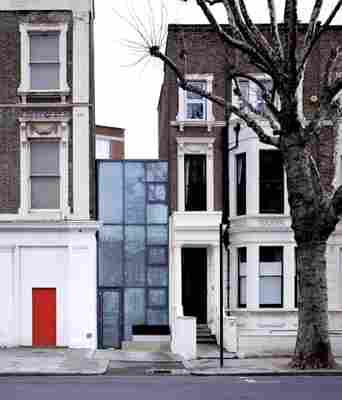
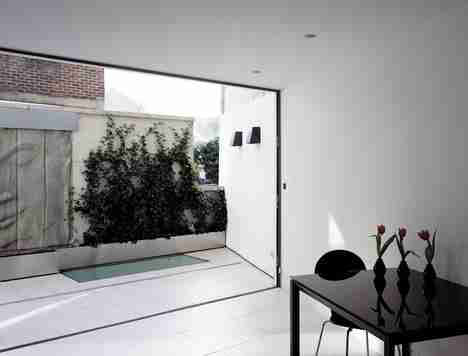
Sunshine On A Rainy Day Means Loads Of Energy
2020 is really not that far away, but are we prepared to experiment with what Philips has conjured up for our housing options of the future? They are proposing that we harness the energies of the elements to sustain our living quarters by entrapping the renewable resources on-site, using some membrane-type of contraption! Shifting the focus from eco-friendly building materials, Off the Grid Sustainable Habitat 2020 will do-away with “inert outer surfaces” that merely protect out exteriors by making them intelligent. Apparently the exteriors will feature functional and responsive ‘skins’ that react to the ever changing environment. The exteriors are thus built that they can capture the rainwater (recycled for domestic use and filtered for drinking), trap the sunlight (for electricity and solar power), harness the winds (for air cooling) and channelize daylight (for illumination).
The proposal sounds interesting, but the only area its gets too far fetched, is when Philips suggests, that the ‘intelligent membrane’ of the exterior could mean that the building would no longer need to be connected to traditional energy and water supply systems.
I don’t see this happening anytime soon, at least not in 2020.
Designer: Philips Design
Sustainable Air
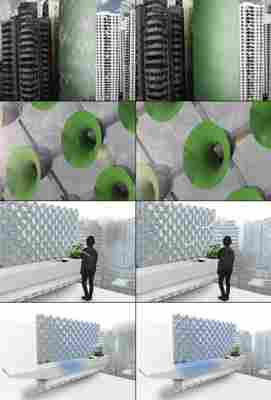
Sustainable Water
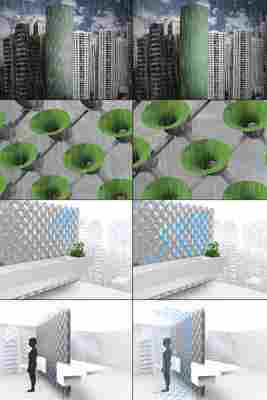
Sustainable Light
Sustainable Waste








